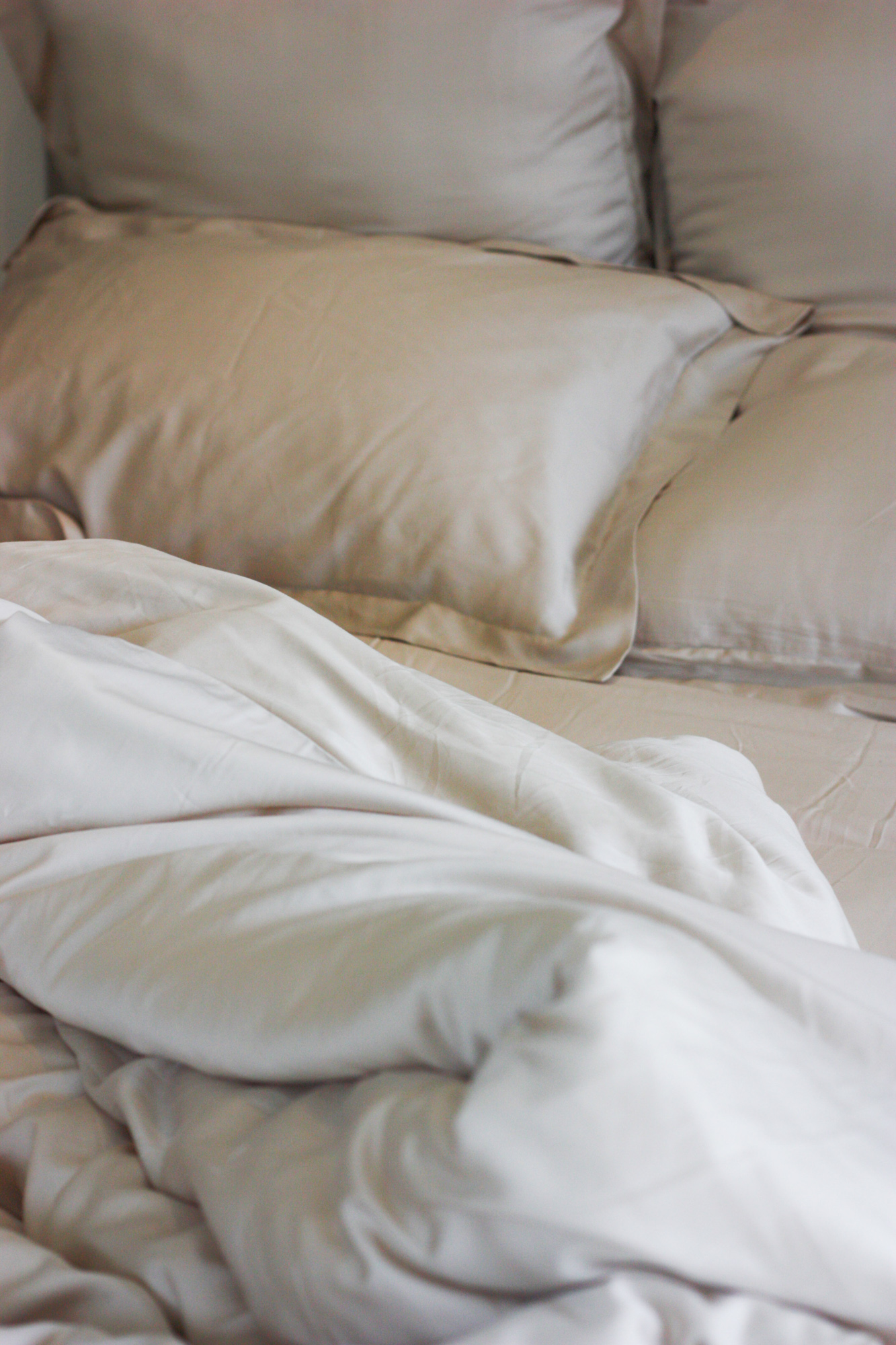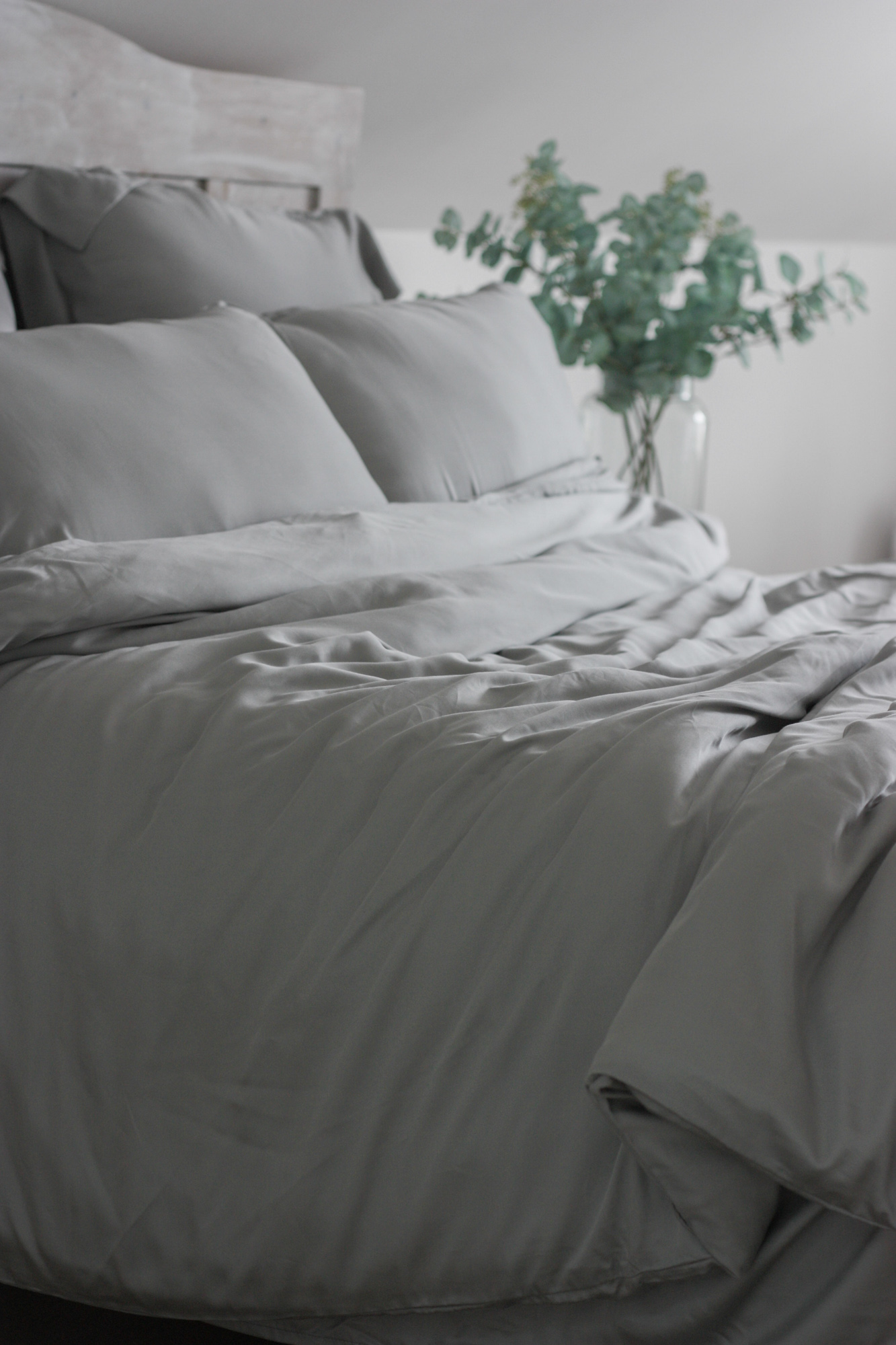How to wash a silk pillowcase without ruining this delicate material
Learn how to wash a silk pillowcase with expert advice for this new beauty essential


A silk pillowcase is one of life's small pleasures, they promise a better night's sleep, softer skin, and smoother hair. But as fabrics go, silk is notoriously difficult to care for, meaning when it comes round to laundry day you might be left wondering if it was really worth substituting your cotton pillows for silk after all.
While it might be tempting to save yourself the hassle and bung your silk bedding into the washing machine alongside the rest of your laundry, it really is worth putting in the extra time and effort so you can reap the benefits of your silk pillowcases. 'Silk bedding is a beautiful material but it takes some proper care and attention to ensure it doesn’t get spoilt in the wash - or worse, completely shrunk,' says James Higgins, CEO of Ethical Bedding.
Yet, the dos and don'ts of silk laundry can seem overwhelming at the best of times, and down right impossible at the worst. And since you bought silk pillowcases to sleep better, and make life more comfortable and stress free, that shouldn't be the case? Thankfully, there are some tips and tricks to help you through your laundry routine that you're sure to appreciate when your head hits the pillow at night. After all, what could be better than a more restful night's sleep?
What are the benefits of silk pillowcases?
If you're still questioning whether it's worth styling a bed with silk pillowcases, the short answer is yes - but don't just take our word for it.
'There are several benefits for your skin, hair and sleep quality when you switch to a silk pillowcase,' explains James from Ethical Bedding. Silk is really one of the best beddings for skin. 'It will minimize pulling and abrasions to the skin due to the low surface friction of silk compared to cotton, which reduces wrinkles.' This is also the reason why silk feels so smooth.
According to James, the low surface friction of silk is beneficial for your hair too, helping to reduce tangles and preventing frizz. Because the material is less porous than cotton, a silk pillowcase will also absorb less moisture from your skin and hair, keeping it where it belongs. If you suffer from a dry scalp or a skin condition like eczema, a silk pillowcase could be especially helpful.
Then there's the benefit of comfort. In hot weather, silk is the best choice for your bedding as the light and breathable material will help you better sleep in heat. As James explains: 'If you struggle to maintain a comfortable temperature at bedtime, eucalyptus silk is the best thermoregulating bedding fabric on the market. You'll always have a peaceful sleep thanks to its single-cellular structure.'
The Livingetc newsletters are your inside source for what’s shaping interiors now - and what’s next. Discover trend forecasts, smart style ideas, and curated shopping inspiration that brings design to life. Subscribe today and stay ahead of the curve.
Although they typically cost more than cotton, silk pillowcases really are worth it if you're looking for a more comfortable sleep that not only leaves you feeling well rested but also does wonders for your skin and hair. Pillowcases are the place to start if you don't want to splash out on an entire silk bedding set, but if you're feeling so inclined, silk sheets will also carry the same benefits. And of course, our tips on caring for silk apply to either.
How to care for silk bedding

1. Hand-wash in cold water to avoid shrinking
There's a reason washing machines were invented - handwashing is a time-consuming chore. But when it comes to washing silks, it's strongly advised that you avoid the laundry room and find time to hand-wash in cool water.
'Washing silk in hot or even warm water can cause shrinkage to your bedding,' explains James. 'It’s best to hand wash your silk in cold water which is anything 86 Fahrenheit or below.'
If you're washing pillowcases, fill a basin with tepid water and leave them to soak for around three minutes (using a gentle silk-specific detergent). Gently agitate the fabric to help clean it, but don't scrub vigorously as this will ruin the fibers. If you're washing your entire bedding, the best place to do so is in the bath.
When time is of the essence, you can use a washing machine if absolutely necessary, but as James notes: 'use a delicate cycle with the lowest possible spin setting.' It's a good idea to use a mesh bag, like this one from Amazon, to hold your delicates in the washing machine as this will keep your silks softer for longer.

2. Avoid harsh detergents
Silk is one of the most softest natural fibers around, so it won't withstand your regular laundry detergents. 'Picking the wrong type can cause the fibers in the fabric to harden, and you can also be left with potentially-uncomfortable residue,' says James.
Most hand-washing detergents will be manufactured specifically for delicate fabrics. For the washing machine, use a non-biological liquid detergent that's specially designed for silk. It's a good idea to invest in an eco-friendly and sustainable option too. 'Look out for mild, toxin-free soap with a neutral pH, similar to what you’d use to wash wool,' James suggests.
You should also stay away from softeners and scents. 'Because silk is naturally soft, fabric conditioner isn’t necessary when washing your bedding. In fact, it can even be detrimental, and leave behind residue,' explains James. That goes for optical brightener as well. 'While it can help some fabrics to retain their color and vibrancy, silk is natural so it won’t have any effect and may even break down the fibers.'
3. Launder silk separately from other materials
Not only will washing your silks separately allow you to use the right detergents, but washing silks alongside heavier fabrics can damage silk's fine material. What's more, the rich colors of silk can easily bleed, causing colors to run into other fabrics in the wash.
Because of this, it's important you don't use rub stain removers or other harsh chemicals onto your silk bedding if you spot a stain. 'Instead, use your finger to gently blot the affected area with a mild stain solution,' says James. 'If you don’t have any to hand, you can create a simple solution using a couple of tablespoons of white vinegar and lukewarm water.' Afterward, wash your silks as you regularly would.
4. Line dry out of direct sunlight and never tumble dry
Being such a gentle material, it's no surprise that using a tumble dryer to dry your silk bedding is a recipe for disaster. Not only can the spin cycle damage the fibers and lead to tears and holes, but the heat is likely to cause your silks to shrink.
You should always allow your silk bedding to naturally dry. However, although it seems like the natural thing to do after you've washed your silk bedding, it's important to avoid wringing out the water. 'Twisting or wringing out your silk, or just generally handling it too roughly, can weaken the fibers and damage your material,' says James. 'Instead, gently ease the bulk of the water out by hand.'
Afterwards, leave your silk bedding outside to dry. Although it's safe to hang on the line, it's best to avoid direct sunlight and the intense heat of the day because, as James notes, 'leaving silk in direct sunlight can lead to discoloration at best and damaged fibers at worst'. Dry your silk bedding in the early morning or evening, or in the shade. Because the material is light, it will dry in no time.
Because silk's natural fibers aren't wrinkle-resistant like synthetic fibers tend to be, once they’ve finished drying, your silk pillowcases and sheets will probably look creased. 'You can either use a handheld steamer to slowly remove the wrinkling,' James advises. 'Or iron silk on the lowest temperature setting with a pressing cloth between the fabric and iron.'

Lilith Hudson is a freelance writer and regular contributor to Livingetc. She holds an MA in Magazine Journalism from City, University of London, and has written for various titles including Homes & Gardens, House Beautiful, Advnture, the Saturday Times Magazine, Evening Standard, DJ Mag, Metro, and The Simple Things Magazine.
Prior to going freelance, Lilith was the News and Trends Editor at Livingetc. It was a role that helped her develop a keen eye for spotting all the latest micro-trends, interior hacks, and viral decor must-haves you need in your home. With a constant ear to the ground on the design scene, she's ahead of the curve when it comes to the latest color that's sweeping interiors or the hot new style to decorate our homes.